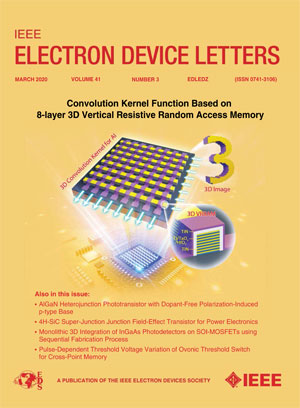Record 60.3 mV/dec Subthreshold Swing and >20% Performance Enhancement in Gate-All-Around Nanosheet CMOS Devices Using O₃-Based Quasi-Atomic Layer Etching Treatment Technique
IF 4.1
2区 工程技术
Q2 ENGINEERING, ELECTRICAL & ELECTRONIC
引用次数: 0
Abstract
To overcome the critical channel interface issues in gate-all-around (GAA) devices that are induced by germanium (Ge) residue on the nanosheet (NS) channels, a precise quasi-atomic layer etching (qALE) technique based on O3 was developed in this work. This technique has a self-limited oxidation thickness of 6.1 Å and is able to remove the residual Ge atoms. The improved interface quality leads to a 99% reduction in the interface state density (求助全文
约1分钟内获得全文
求助全文
来源期刊

IEEE Electron Device Letters
工程技术-工程:电子与电气
CiteScore
8.20
自引率
10.20%
发文量
551
审稿时长
1.4 months
期刊介绍:
IEEE Electron Device Letters publishes original and significant contributions relating to the theory, modeling, design, performance and reliability of electron and ion integrated circuit devices and interconnects, involving insulators, metals, organic materials, micro-plasmas, semiconductors, quantum-effect structures, vacuum devices, and emerging materials with applications in bioelectronics, biomedical electronics, computation, communications, displays, microelectromechanics, imaging, micro-actuators, nanoelectronics, optoelectronics, photovoltaics, power ICs and micro-sensors.
 求助内容:
求助内容: 应助结果提醒方式:
应助结果提醒方式:


